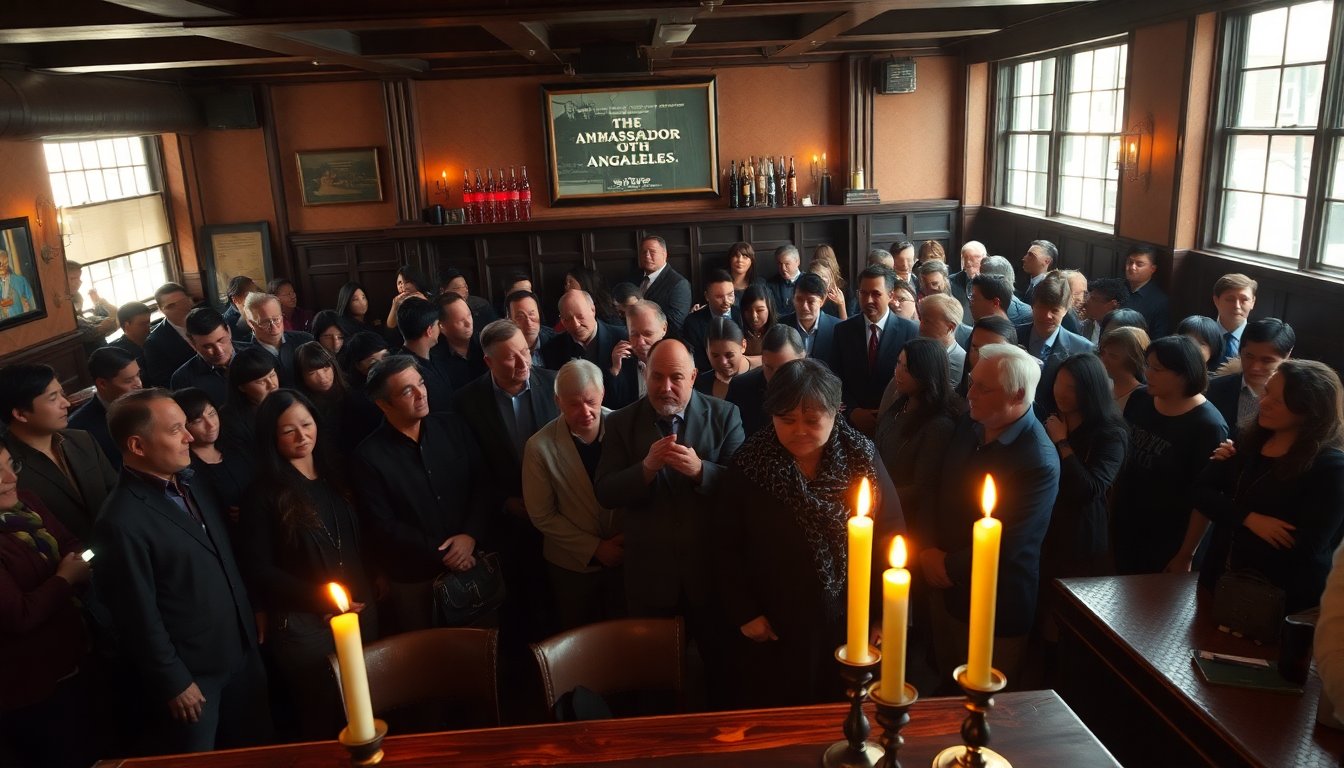Table of Contents
On a chilly evening in February 2006, a gathering of around a hundred individuals convened at the iconic Koreatown bar, HMS Bounty, to commemorate the loss of the Ambassador Hotel, a storied landmark in Los Angeles. Despite the tireless efforts of the Los Angeles Conservancy, this historic site had met its fate, and among those lamenting its demise was the renowned actress Diane Keaton.
Passing away at the age of 79, Keaton was recognized globally for her illustrious film career, which included classics like Annie Hall, The Godfather, and Father of the Bride. However, her influence in Los Angeles extended beyond the silver screen; she was a dedicated advocate for the preservation of the city’s rich architectural history. Through her nearly twenty-year tenure on the board of the L.A. Conservancy, she became a formidable voice in campaigns aimed at safeguarding significant historical structures.
Diane Keaton’s passion for preservation
Linda Dishman, the former president of the L.A. Conservancy who retired in 2023 after over three decades, reflected on Keaton’s deep-rooted commitment to preserving Los Angeles’ heritage. “The more I learned about her, the clearer it became that her passion was rooted in her upbringing and family connections to Los Angeles,” Dishman noted. “She truly understood the narrative behind the places that shape our city, and her dedication was not only for the buildings themselves but for their cultural significance and future implications.”
An unexpected journey into advocacy
Keaton’s journey into the realm of historic preservation began with her fascination for vintage homes. One such residence, designed by the esteemed architect Lloyd Wright, became her own. Her initial curiosity was sparked by a Spanish-style house belonging to a member of the Conservancy board, leading her to become increasingly involved in the organization. From participating in fundraising events to eventually joining the board, her passion flourished.
Dishman remarked on Keaton’s charm and the shared enthusiasm for historic places they both cherished. “Her initial focus was on houses; she would purchase and restore historic properties, including her own Lloyd Wright home. However, her concern expanded to encompass the broader architectural landscape, particularly her unwavering commitment to the Ambassador Hotel,” Dishman explained.
The rise and fall of the Ambassador Hotel
The Ambassador Hotel, designed by Myron Hunt, opened its doors in 1921, transforming an area that was then on the outskirts of Los Angeles into a haven for the elite. With additions by architect Paul Williams, including a popular coffee shop and the legendary Cocoanut Grove nightclub, it soon gained notoriety, welcoming every U.S. president from Hoover to Nixon. Tragically, the hotel became infamous as the site of Robert F. Kennedy’s assassination in 1968, which marked the beginning of its decline. After ceasing operations in 1989, the hotel became a popular filming location until the Los Angeles Unified School District acquired the property in 2001. After protracted negotiations with the Conservancy, which aimed to adapt the historic structure for educational purposes, the decision was made to demolish it in 2005.
A vision for the future
“The Ambassador Hotel held countless tales of Hollywood’s history that Diane was deeply passionate about,” Dishman shared. “Her vision extended beyond the past; she believed in what the building could have represented in the future as a vibrant learning environment.” During the memorial event in 2006, Keaton voiced her sorrow over the loss of the hotel, likening it to the heart-wrenching experience of losing a beloved partner. She poignantly expressed, “As I stand before the remnants of our once-glorious Ambassador Hotel, I felt the ache of its absence, echoing a call to remember and strive harder for preservation.”
The impact of a star
Throughout her involvement with the Conservancy, Keaton leveraged her fame to advance preservation efforts. Dishman noted that her mere association often opened doors that might have otherwise remained closed. “In Los Angeles, securing meetings with officials can be challenging, but when I mentioned that ‘Diane Keaton would like to meet with your supervisor,’ doors swung open. Her presence would elicit interest and respect, creating opportunities to discuss preservation issues that otherwise might not have been entertained,” Dishman recalled.
Keaton’s genuine and direct approach to advocating for preservation resonated with many. “She connected with people effortlessly, inspiring them to engage with the cause,” Dishman added. “Her attendance at our events demonstrated her unwavering commitment to success stories in preservation, like the rehabilitation of Frank Lloyd Wright’s Ennis House, which she admired for its architectural parallels to her own home.”
Years later, Keaton articulated her reflections on the lessons learned from the Ambassador’s fate in a Los Angeles Times editorial, emphasizing the importance of viewing historic buildings through a lens of sustainability. “We have disregarded old buildings as if they were disposable. Preservation must stand alongside environmental conservation as a vital part of our future,” she wrote. “Each demolished structure erases valuable lessons and stories from our collective history, and we must recognize the emotional toll of squandering the resources invested in them.”


